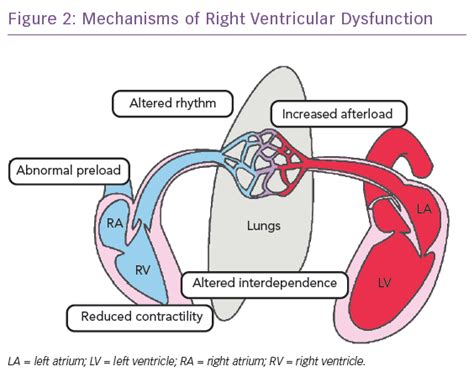d shape lv | D d shape lv The left ventricle becomes D-shaped, which is a sign of increased preload in the right ventricle (RV) displacing the septum toward the left. Septal flattening is best appreciated . On Saturday afternoon at the Club de Tennis on the outskirts of Paris, Mr. Van Assche delivered a radically different collection called "A Soldier on My Own," centered around military.
0 · Right Ventricular Dysfunction and the “D”
1 · D
Natural products for human health: an historical overview of the drug discovery approaches. S. Bernardini, A. Tiezzi, +1 author. E. Ovidi. Published in Natural Product Research 1 August 2018. Medicine, History. TLDR.
The left ventricle becomes D-shaped, which is a sign of increased preload in the right ventricle (RV) displacing the septum toward the left. Septal flattening is best appreciated . Together, these transgastric midpapillary short-axis images capture the classic echocardiographic finding of a “D”-shaped left ventricle (LV) .
The “D Sign” is an ultrasound/echo finding that shows the left ventricle as a D-shaped structure. It is a result of right ventricular overload causing a shift of the septum towards the left side of the heart. The “D-sign” can be the result of either right ventricular Pressure and/or Volume overload. The left ventricle becomes D-shaped, which is a sign of increased preload in the right ventricle (RV) displacing the septum toward the left. Septal flattening is best appreciated in the short-axis view at the level of papillary muscles (basal or mid-left ventricle).Together, these transgastric midpapillary short-axis images capture the classic echocardiographic finding of a “D”-shaped left ventricle (LV) secondary to septal flattening in the setting of right ventricular dysfunction.In normal hearts, LV-EDP usually exceeds RV-EDP. In times of RV overload, RV-EDP may exceed LV-EDP forcing the ventricular septum towards the LV during diastole. This distorts the normal LV shape (creating a so called ‘D-shaped’ ventricular cavity; Fig. 4), reducing LV diastolic compliance and impairing LV filling. 5. Fig 5.
Right Ventricular Dysfunction and the “D”
D-shaped left ventricle (D-LV), is an interesting echocardiographic finding in PH and is the result of structural distortion of the interventricular septum caused by an abnormal pressure gradient between the left and right ventricles.
hermes karton größe
Flattening of the interventricular septum detected during echocardiographic examination is called D-shaped left ventricle. We present a case of an elderly male of African descent, who presented with increased shortness of breath.The degree of LV compression can be visualized by parasternal echocardiography or CMR in the short axis as a D-shaped LV, most simply quantified with the LV eccentricity index . This index measures the LV lateral dimension as a ratio over the anterior-posterior dimension in the short axis ( Figures 1A and 1B ) (9) .
When there is severe pulmonary hypertension associated with elevated right ventricular systolic pressures, the interventricular septum bulges into the LV in both systole and diastole so that LV cavity has a D shape through out. Septal flattening is a result of RV overload, which alters IVS curvature and leads to the development of a D-shaped LV. The LV eccentricity index is useful in the assessment of septal flattening, as it indicates the ratio between 2 major diameters of . We defined the D‐shaped left ventricle (D‐LV) at end‐diastole as EI ≥1.2 at end‐diastole from the standpoint of hemodynamics. Kaplan‐Meier curves demonstrated that patients with D‐LV at end‐diastole were at higher risk for cardiovascular events than those without (HR, 1.86; 95% confidence interval, 1.29–2.68; P =0.001; Figure 5 ).
The “D Sign” is an ultrasound/echo finding that shows the left ventricle as a D-shaped structure. It is a result of right ventricular overload causing a shift of the septum towards the left side of the heart. The “D-sign” can be the result of either right ventricular Pressure and/or Volume overload. The left ventricle becomes D-shaped, which is a sign of increased preload in the right ventricle (RV) displacing the septum toward the left. Septal flattening is best appreciated in the short-axis view at the level of papillary muscles (basal or mid-left ventricle).Together, these transgastric midpapillary short-axis images capture the classic echocardiographic finding of a “D”-shaped left ventricle (LV) secondary to septal flattening in the setting of right ventricular dysfunction.In normal hearts, LV-EDP usually exceeds RV-EDP. In times of RV overload, RV-EDP may exceed LV-EDP forcing the ventricular septum towards the LV during diastole. This distorts the normal LV shape (creating a so called ‘D-shaped’ ventricular cavity; Fig. 4), reducing LV diastolic compliance and impairing LV filling. 5. Fig 5.
D-shaped left ventricle (D-LV), is an interesting echocardiographic finding in PH and is the result of structural distortion of the interventricular septum caused by an abnormal pressure gradient between the left and right ventricles.Flattening of the interventricular septum detected during echocardiographic examination is called D-shaped left ventricle. We present a case of an elderly male of African descent, who presented with increased shortness of breath.The degree of LV compression can be visualized by parasternal echocardiography or CMR in the short axis as a D-shaped LV, most simply quantified with the LV eccentricity index . This index measures the LV lateral dimension as a ratio over the anterior-posterior dimension in the short axis ( Figures 1A and 1B ) (9) .
When there is severe pulmonary hypertension associated with elevated right ventricular systolic pressures, the interventricular septum bulges into the LV in both systole and diastole so that LV cavity has a D shape through out. Septal flattening is a result of RV overload, which alters IVS curvature and leads to the development of a D-shaped LV. The LV eccentricity index is useful in the assessment of septal flattening, as it indicates the ratio between 2 major diameters of .

100% lana. Diseño oversize. Cuello pico con solapa. Solapas con muesca. Manga larga con puños abotonados. Bolsillo de ribete en el pecho. Dos bolsillos delantero de ribete y .
d shape lv|D

























